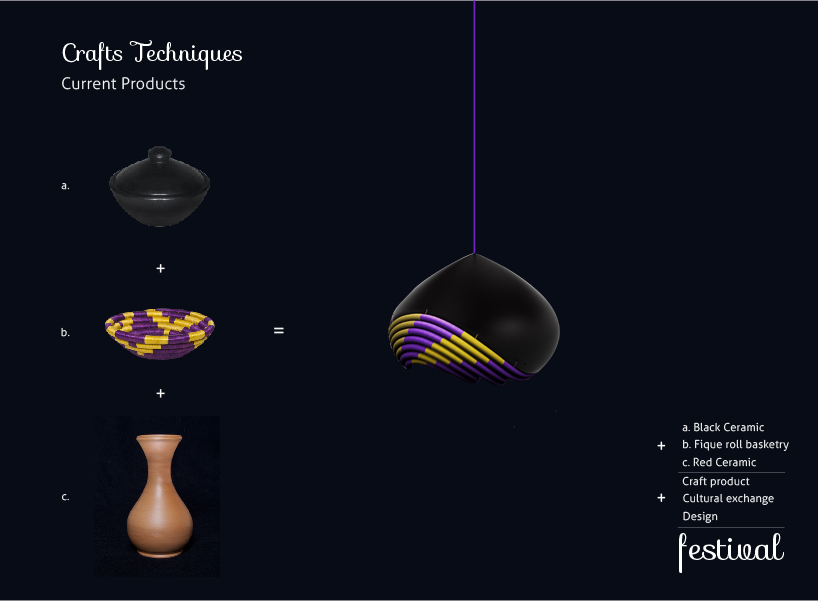
Festival by Evelyn Galicia from colombia
designer's own words:
WORK CATEGORY: crafts
The base of this project is a cultural mix between two colombian regions (Guacamayas - Boyacá and La Chamba - Tolima) that, in spite of being in the same country have great cultural, geographical and environmental differences. The population of this places have survived the Colombian armed conflict through the production of crafts. In this project I project history and craftsmanship of this two populations on a family of objects that get into a new market undiscovered by this two techniques, mixing forms, colors and textures, thus creating a visual festival exalting the manners, history, technique and design on each object.
TECHNIQUE 1: Red and black ceramics from “La Chamba - Tolima - Colombia”
This technique was born as a solution to the need of holding and carrying of food and goods on waterproof containers through the Magdalena river. Several centuries ago, when the river was used as the only transportation way, all the prime matters for the making of these containers was found on the surrounding area. The importance of this technique is on the way it helped the communication of the culture, developing it through the exchange of goods with other areas of the country.
Current use: Pots, vases, plates and everything related to table and kitchen products that serve as containers and withstand high temperatures.
Involved Materials:
- Smooth clay, red and sandy. Digged by the river.
- Polishing rocks (quartz).
- Donkey droppings (this gives the black color to the ceramic on the cooking process).
Red ceramic, production process:
It is currently held by farmers and local artisans. First the extraction of clay. With this, the ceramic paste preparation is made with water, and molded by hand. It is dried by fresh air and polished with quartz stones to give it a smooth and glossy finish. The final process is oven cooking.
Black ceramic, production process:
It is currently held by farmers and local artisans.
First, the extraction of clay, ceramic paste preparation with water, Molded manual Air Dry, Polished quartz stone to give a smooth and gloss. The final process is oven cooking and blackened of the product
Technique 2. FIQUE roll basketry (CESTERIA EN ROLLO DE FIQUE) OF "GUACAMAYAS - BOYACA - COLOMBIA"
This technique created in the former settlement of Indians Tunebos and Laches, was born to collect, transport and exchange food with nearby villages, and to be used as containers for tributes to the gods on sacred ceremonies. The indigenous people used vegetable fibers at their disposal (Fique and straw) that imitated colorful plumage of native birds.
Current Uses: Baskets, vases, individual cup holders and things related to table and kitchen products with no direct contact with water or fire.
Materials involved:
- Cabuya: Is a fiber extracted from a plant called Fique that grows and develops in almost all climates and altitudes of Colombia
- Straw: vegetable fiber extracted from palm leaf shaped as very thin strips
- Vegetable dyes: extracted from plants and flowers of different colors
Production process:
Currently held by farmers and local artisans
Fique: Seeding, harvesting, vegetable fiber extraction, washing, dyeing using plant pigments, cooking, drying and spinning
Straw: Seeding, harvesting, stripping and cutting strips of similar size and drying
Roll: This technique is called tissue or spiral roll and involves winding fique sisal colored threads around pipes consisting of several strips of straw, molding the shape as it is wound is sewn up to the previous turn get the desired height and shape.
design proposal.
Object: Family of lamps
Number of pieces: 6
Form: Organic and generated based on the formal abstraction of current artisan pieces.
External color: Black shiny ceramics, Red shiny ceramics and rolls of fique with variety of color combinations.
Internal color: different colors according to the combination of fique and ceramics.
Texture: The ceramics will be smooth and ribbed on the rolls of fique.
Production: The production process is the same as developed individually by the artisans and farmers using each technique, with unification of the processes in the end, where the rolls of fique wrap around the shape of the ceramics, generating the final form, innovating in the sequence of the rolls, since traditionally these are only made in a spiral form that begins in the center.
Festival Concept 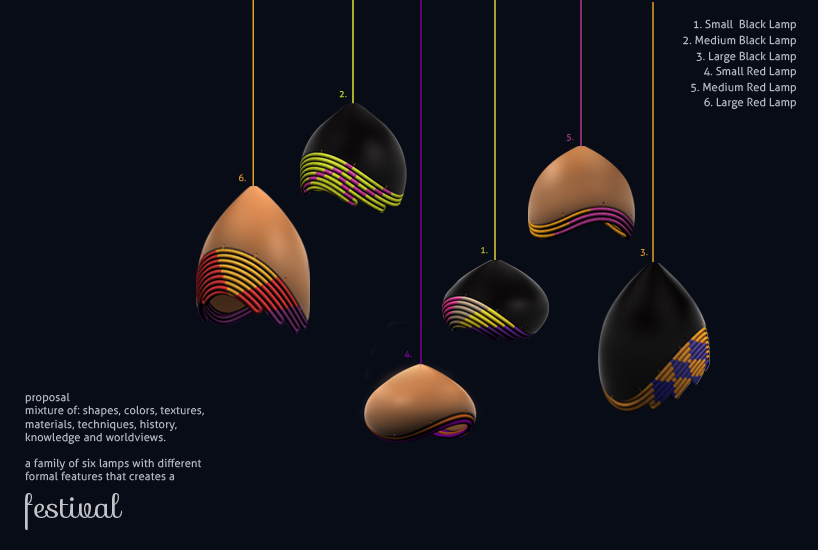
Lamps Family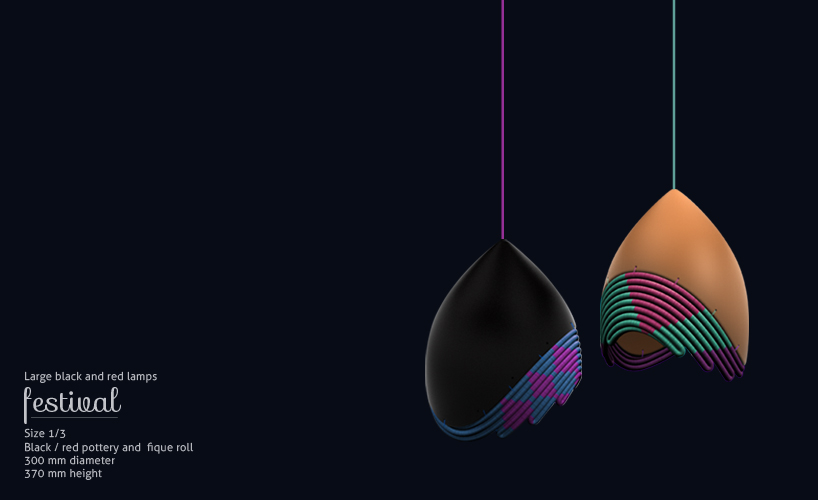
Large black and red lamps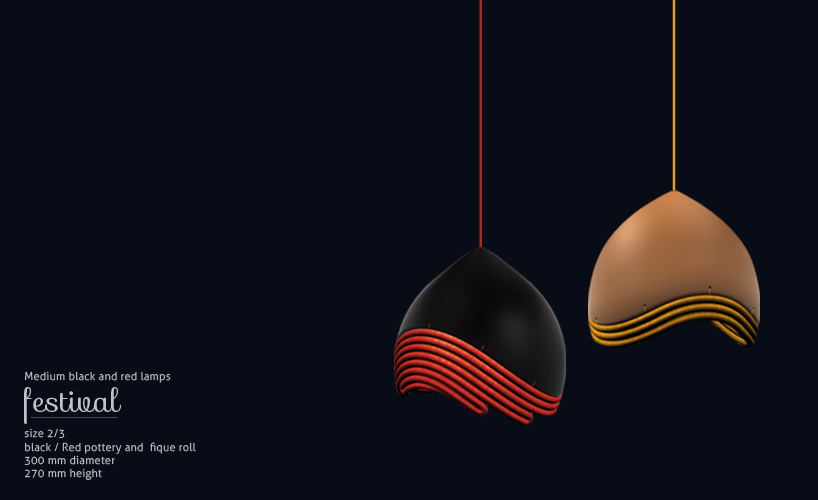
Medium black and red lamps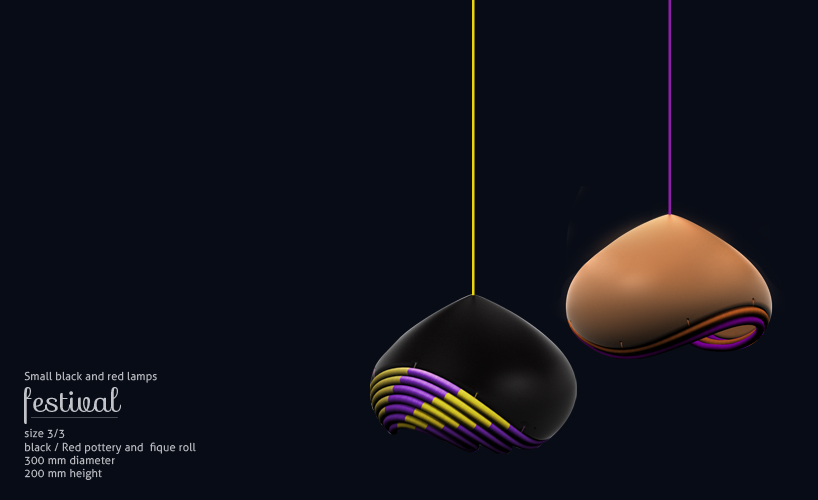
Small black and red lamps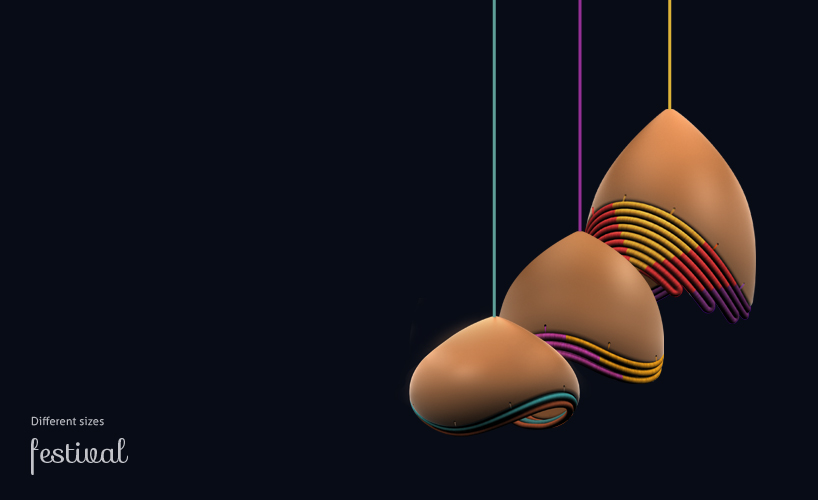
Sizes Lamps